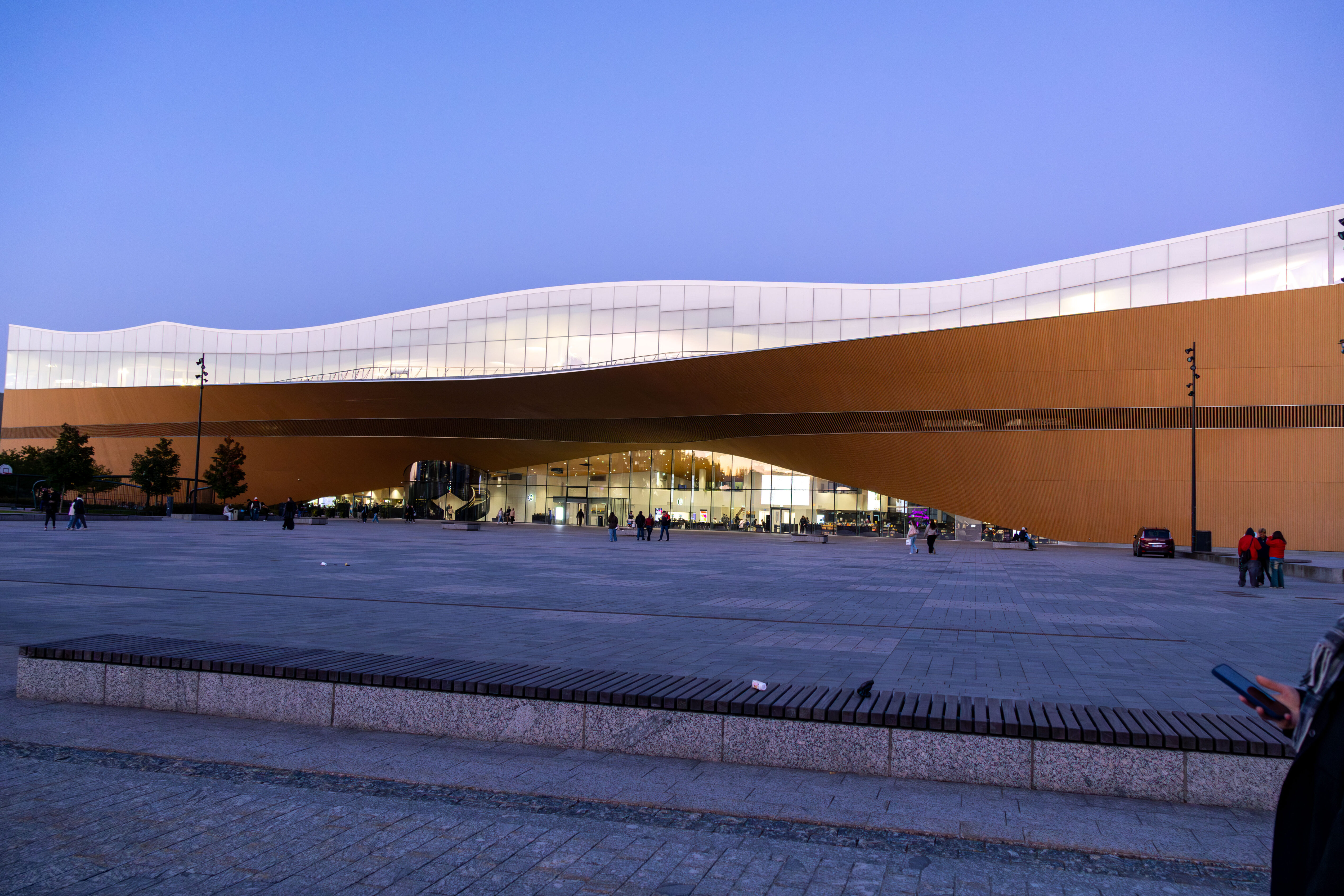
Experiencing It All, Inspired by Every Little Moment–Finnish Experience ep.2
Supported by the DCD program (디지털융합디자인 인력양성사업), four students from UNIST’s Design Department—Minju, Seoyeong, Seonkyu, and Jaehyeok—joined a global design workshop in Aalto University, Helsinki, Finland from September 21 to 29 in 2025. Hereby they share what they have experienced and learned from the training and the trip in two parts: this is the second part—check out the first one here if you haven’t already!
Moments of Daily Life, Sparks of Inspiration
Walking through Helsinki, Finland, we were struck by how naturally design blends into everyday life. Nothing stands out, yet a quiet thoughtfulness fills the city, making people’s daily routines comfortable and enjoyable. It felt as if design worked like an invisible form of care. If design in Korea often feels like something added on top and commercial, in Finland, it felt like something that simply ought to be there.
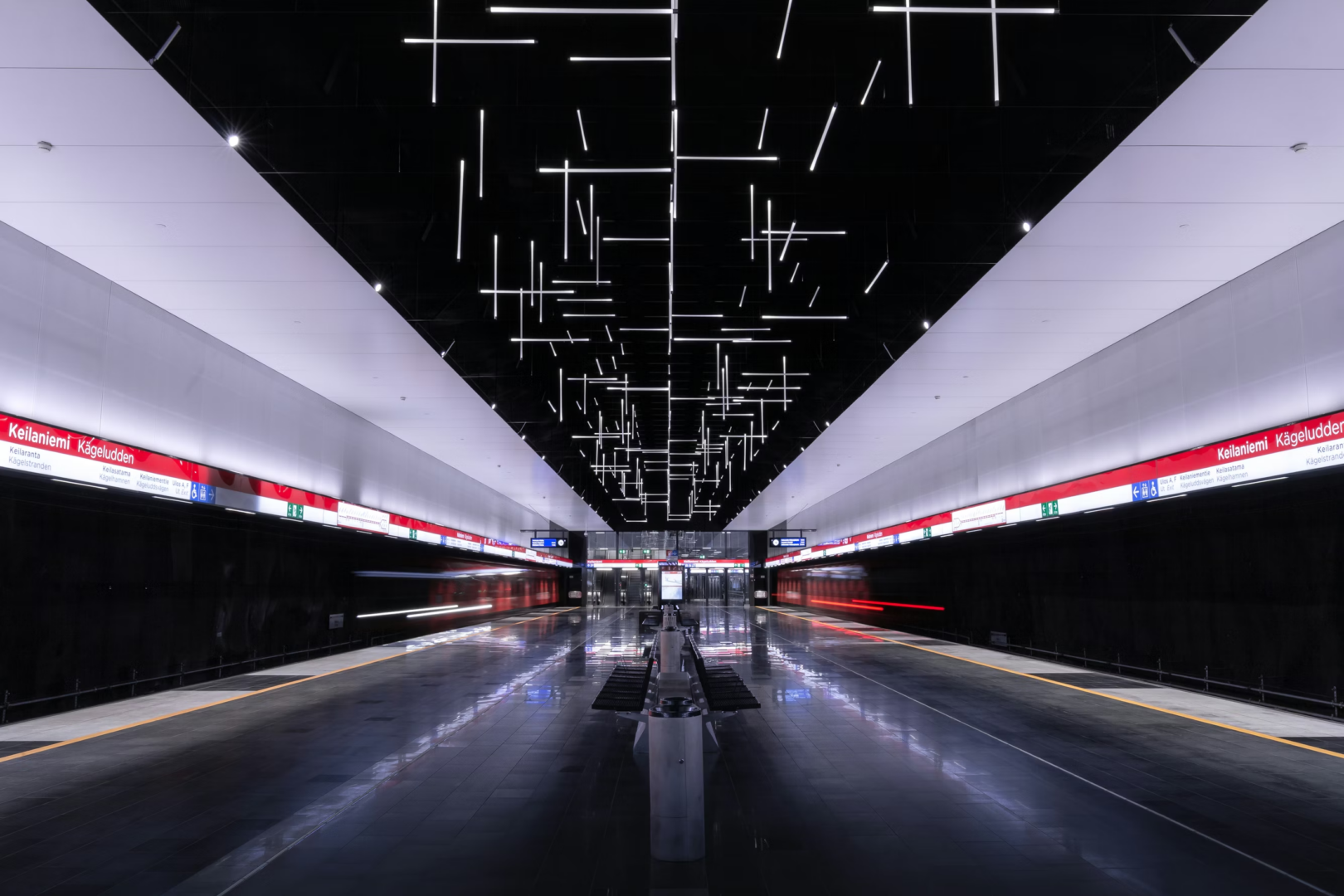
Every time we took the subway on the way to Aalto University and back, each station’s ceiling had a different design, giving us the feeling of passing through a small art museum. Some stations preserved the rough texture of natural rock as if inside a cave, while others created a futuristic mood with colorful lighting.

The metro cars in Helsinki painted in an intense vermilion left a deep impression as one of the city’s symbolic images. It was more than a means of transportation. Unlike the common assumption that subways are dark and dull, the interiors were clean, the signage was clear, and the overall space felt pleasant.

In the city, small details revealed care for users, such as trash bins tilted so cyclists could easily dispose of items, or public facility signs that were simple yet instantly understandable.

Something that might confuse visitors experiencing Finland for the first time are the restrooms. Unlike Korea and many other European countries, Finnish public spaces often have unisex restrooms. The first time we saw a door with both male and female pictograms, we hesitated and even opened and closed the door few times to make sure we were not making a mistake. It took some time to get used to, but eventually we felt it was more than a practical choice. It conveyed a message about respecting gender diversity. More importantly, it demonstrated a social attitude that views differences not as something unusual, but as a natural part of daily lives.
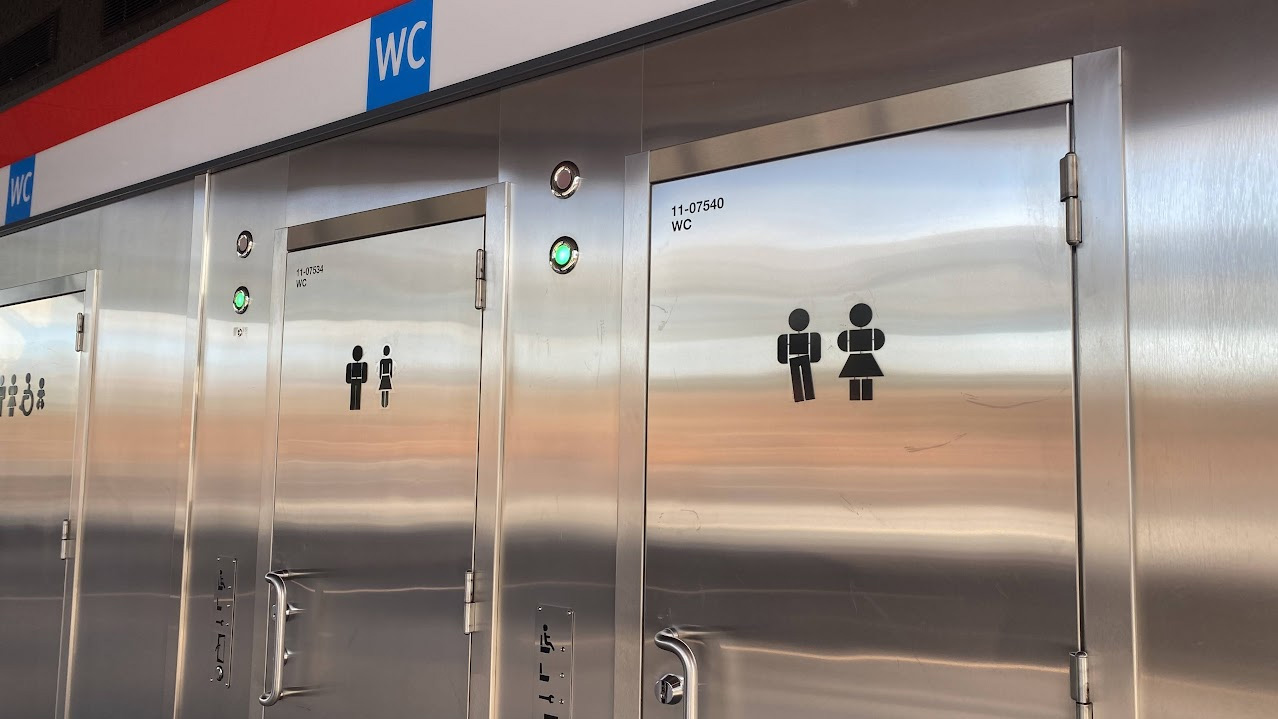
This sense of consideration expressed through design also appeared in food culture. At restaurants and even in grocery stores, labels indicating gluten-free, lactose-free, and vegan options were always clearly marked. Even small pubs naturally provided these options. We realized that a single label could give someone a sense of dignity and the feeling that their choices were respected. People with allergies or specific dietary requirements can dine out without worry. It felt like a glimpse of an inclusive society and made us reflect again on the role of design.

Helsinki Central Library Oodi
Although Helsinki is a city filled with design in everyday life, there is one place where that spirit is captured like a Matryoshka doll—the Helsinki Central Library Oodi. Visiting it was a remarkable experience that showed what a public space can become when designed with and by its citizens.
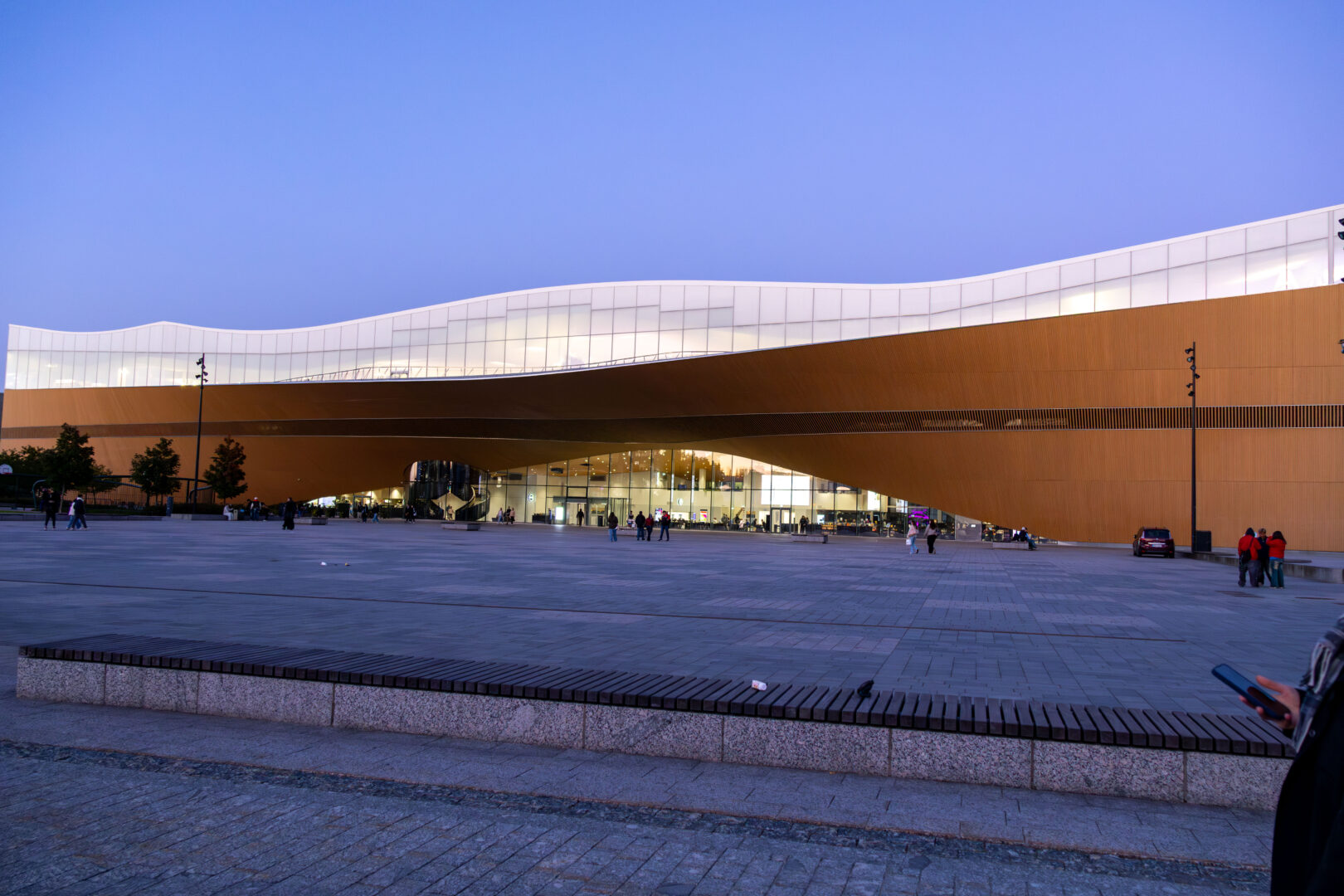
At first, it appeared to be a typical library, lined with elegant bookshelves. However, at the other end, we found a small indoor playground for children. Kids were shouting and running around, yet none of the noise felt disruptive. It blended into the environment like a soft ambient sound. Whether the architecture prevented echoes or the atmosphere embraced children’s voices was unclear, but the sight of a couple napping right beside the play area revealed the space’s acceptance. The library was not limited to quiet reading. It had become a place where anyone could spend time in their own way.
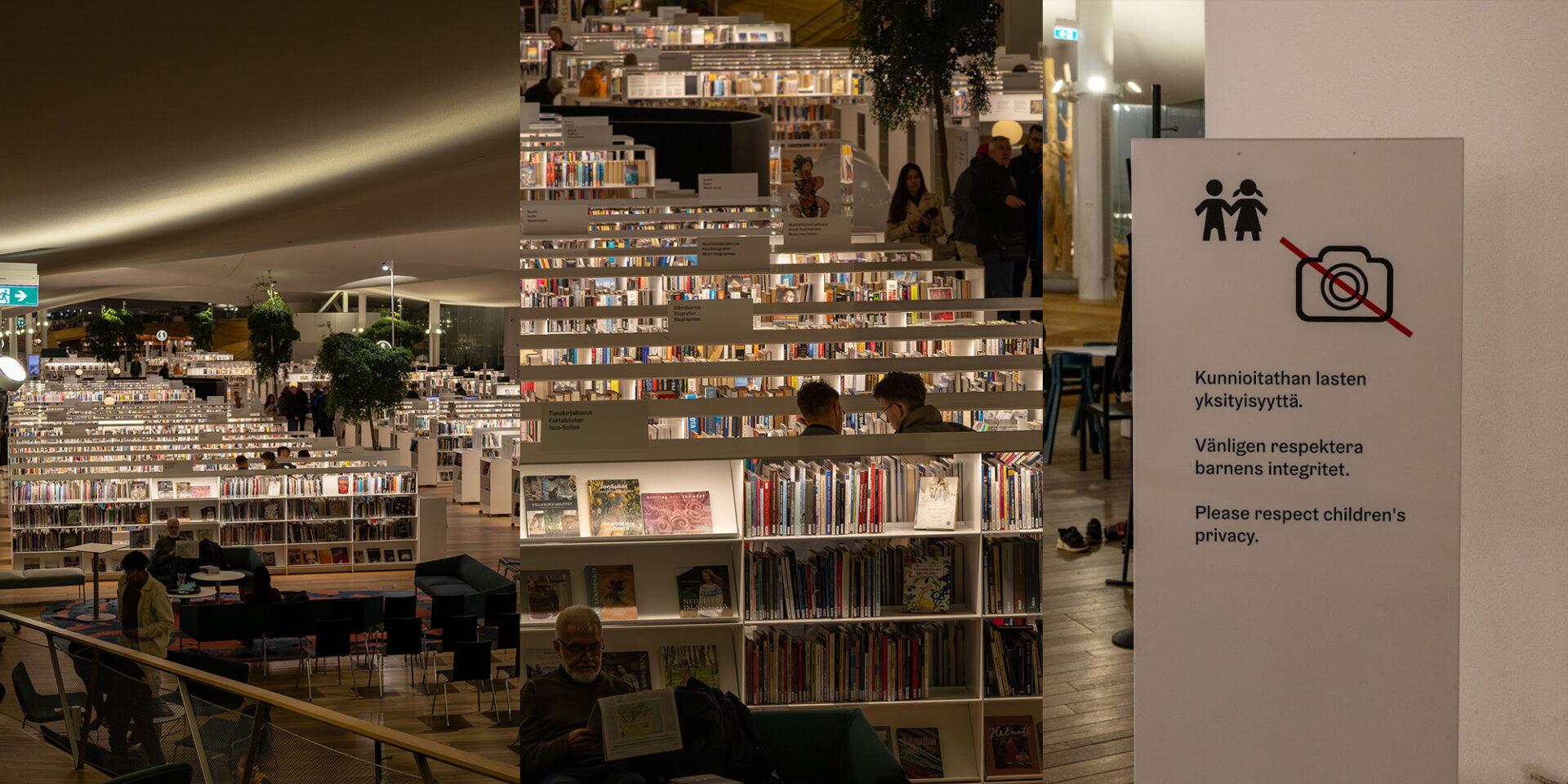
On the first floor, a café and a maker space equipped with 3D printers and laser cutters were available, allowing people to work on creative projects. The second floor had music practice rooms and gaming areas. The library functioned as a third space that welcomed a wide range of activities with shared “things” beyond sharing books.
According to Professor Hyysalo’s 2019 reporting in the International Journal of Design Oodi’s uniqueness came from a six-year process of careful citizen participation. One particularly memorable initiative was the “Friends of the Central Library (FCL)” project, which ran from 2014 to 2015. Out of ninety-five applicants, twenty-eight Helsinki citizens participated in three workshops where they designed service concepts across seven key areas. These included volunteer systems, a “Start Here” service for immigrants, and youth democracy education programs producing nearly one hundred pages of concrete proposals. With design tools such as customer journey maps and service blueprints, they went far beyond simply suggesting ideas like “It would be nice to have this.” The way children’s voices became part of the space, rather than just noise, or how some people played chess, others watched movies, and others practiced instruments, reflected how deeply citizen voices shaped the design from the start. The library was not a sole creation of architects or public servants. It became a twenty-first-century civic plaza shaped by the people who would actually use it. A landmark in a new way.
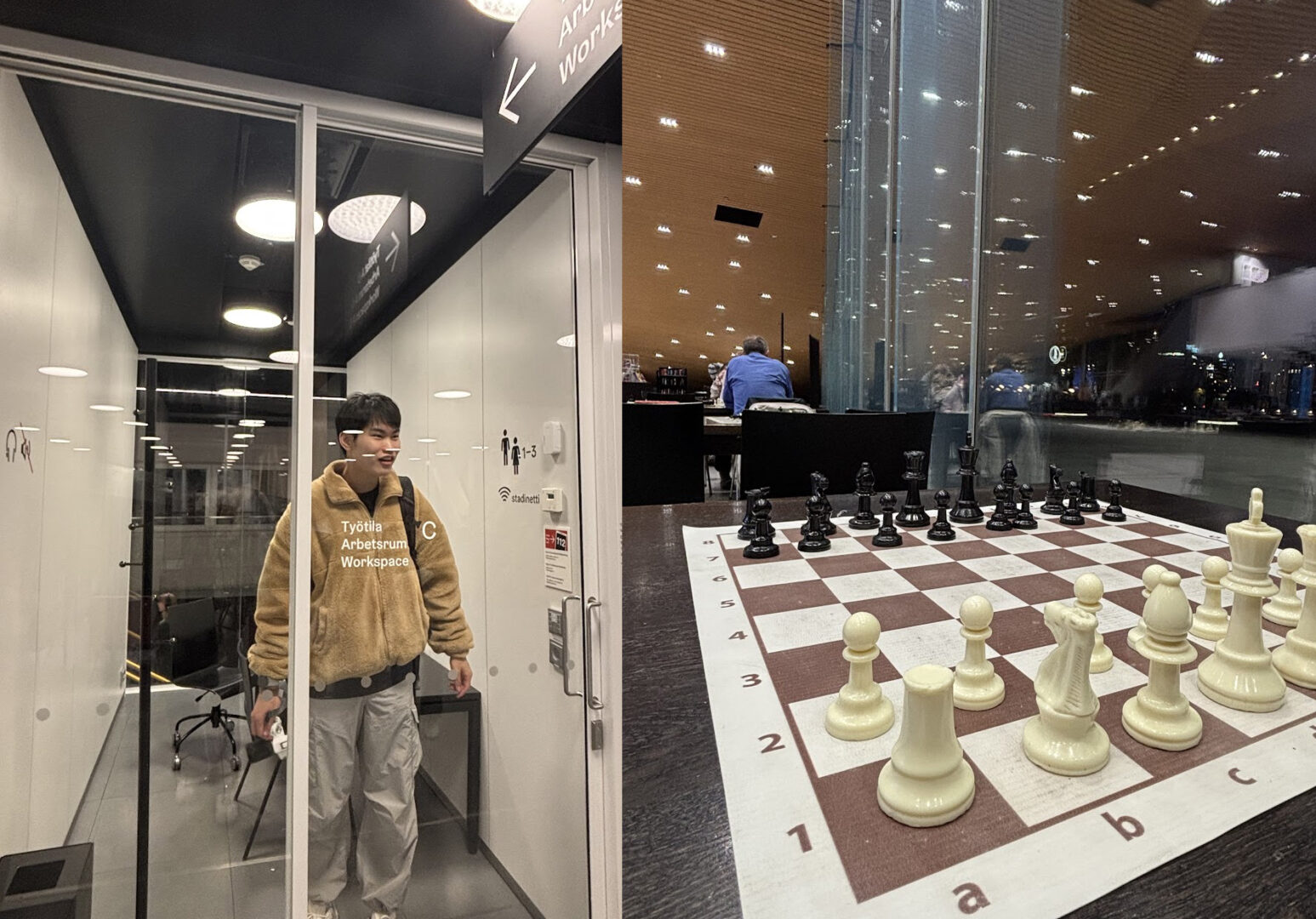
Even the gender-neutral restroom underground was designed with care, featuring pastel-toned counters and air-drying faucets. The opaque doors revealed silhouettes faintly when the lights were on inside. It felt slightly unsettling at first, but it also made it easy to see whether the stall was occupied. It reflected an understanding that a truly good space must consider even its restrooms.

Finnish design went beyond convenience. It created an environment where everyone feels considered and respected. We were reminded that good design does not need to call attention to itself to make people’s lives more comfortable and enjoyable. Thoughtfulness that works quietly within everyday life, without grand declarations or flashy decoration, is what makes design genuinely good. It was an experience that continues to inspire us. Even now, back in Korea, we often think of Helsinki’s streets, those quiet and orderly spaces. And we wonder: “Can we create a design like this too?”
Visiting Leading Service Design Firms
During this workshop program, we visited three design companies and explored the role and future of design from different perspectives. The three companies we visited, Hellon, Accenture Song, and DK&A (now NoA Ignite), all share the goal of improving human experiences through design, yet each approaches that goal differently. Hellon designs long-term experiential journeys centered on emotion and relationships. Accenture Song integrates design, technology, data, and business strategy to create a large-scale impact. DK&A views design as a process of communication across teams, focusing on producing fast, visual, and functional outcomes.
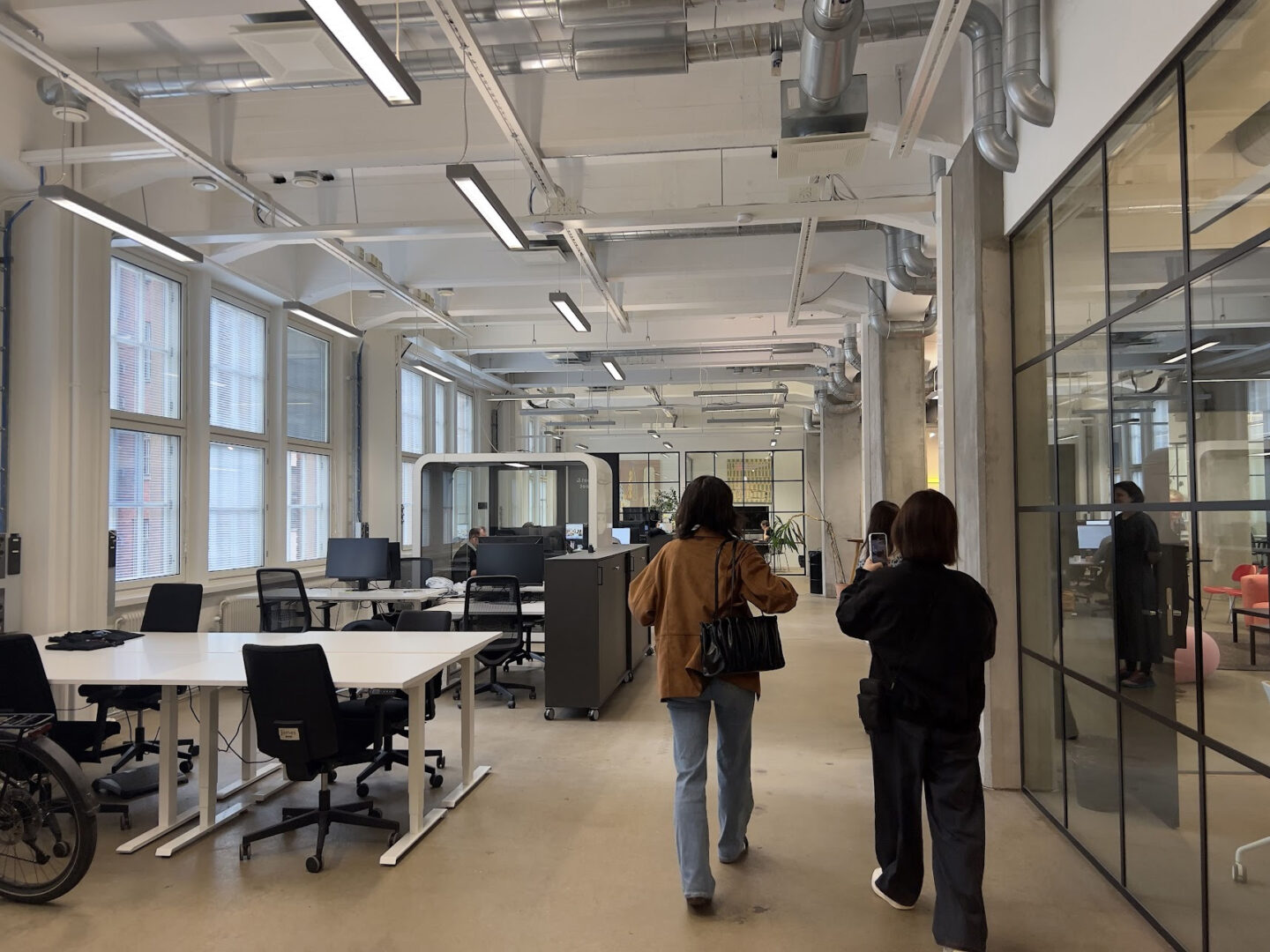
Hellon is a service design company with about one hundred employees with studios in London and Helsinki. It excels at designing emotional connections between organizations and users. One idea that especially stood out during our visit was their approach called “Creating Life-long Connections Through Emotional Experiences.” It reflects the philosophy of designing not only services but also the long-term relationships people form with brands and products. Their OKR project, which aimed to help employees connect their own growth with the company’s goals, was particularly thought-provoking. It showed us that good design must shape not only the external customer experience but also the internal experience of the organization. A system that helps employees connect their personal development with the company’s mission also falls within the domain of design. Seeing them frame the transition into the AI era not simply as technological adoption but as a journey of human growth taught us that a designer’s role is ultimately to create meaningful bridges between technology and people. One designer said during the presentation, “We are not designing tools. We are designing experiences where people grow alongside the tools.” That sentence stayed with us.

Started off as a small digital design studio in Helsinki called Fjord, Accenture Song is now the world’s largest digital service design studio and it truly lived up to its reputation. It felt like an engine that expands brand experiences using data, technology, and creative storytelling. Visiting Song was a memorable experience that allowed us to sense how design, technology, and business strategy can merge into a shared language. Unlike the typical image of a traditional consulting firm, the studio was an open environment filled with creativity and experimentation. Teams collaborated flexibly on brand experience, service design, and digital innovation. Through actual client cases, we were able to see how brand storytelling and interaction design can be integrated to expand the user experience. It showed us that design has firmly become a tool for generating business impact, not just aesthetic value. We were reminded again of the importance of hybrid approaches that connect data, technology, and emotion in future design practice and research.

Recently rebranded as NoA Ignite, DK&A is a digital design consulting firm affiliated with the North Alliance. They view design as a “communication process across teams” and emphasize fast prototyping and collaboration-driven workflows. Even during the visit, when they introduced their work, they stressed the importance of communication. They explained that what matters is not only producing a polished result but also how well team members understand and articulate ideas throughout the process. Perhaps for that reason, the role of the “UX Engineer,” someone who bridges the gap between designers and engineers, felt especially intriguing. Their approach of using AI to quickly create high-quality HTML prototypes and gather feedback based on near-real interactions revealed a practical, grounded perspective. They even experimented with leaving explanations as videos or using AI-generated voiceovers to make communication faster and more precise. These attempts left a strong impression on us.
Across all three companies, what we felt in common was that while AI will continue to permeate more areas of design practice, the moments that truly matter will still center on people. Perhaps the most significant shift AI will bring is not that it will decide for us, but that it will enable us to create and discuss things more quickly. With AI handling the repetitive work, designers will gain more time to focus on fundamental questions: Why is this design necessary? What meaning will it offer to users? What impact will what we create have on the world? These are the questions we must continue to ask.
Finnish Food experience

The foods we experienced in Finland stayed with us not only because of their flavors but also because of the atmosphere and the places in which we enjoyed them. The highlight, without question, was the course meal at Lonna Restaurant. This small restaurant sits on a tiny island that can only be reached by boat from Helsinki, and its setting alone makes the experience feel almost secretive. During the fifteen-minute boat ride, the Helsinki skyline slowly faded behind us, and the cool wind sweeping across the sea heightened our anticipation. When we arrived, a small and cozy restaurant welcomed us.

The meal began with lightly seared salmon, followed by pumpkin purée, trout paired with lobster sauce, and finally mushroom ice cream. Every dish stimulated our senses in its own way. The smoked salmon salad was clean and delicate, allowing the natural flavors of the ingredients to stand out, and even the dressing revealed a careful balance. The main trout dish was mild yet full of depth, with a perfectly crisp exterior and a moist, tender center. What surprised us the most was the mushroom ice cream. At first, we wondered how mushrooms and ice cream could go together, but one taste was enough to make us appreciate the unexpected harmony. The subtle earthiness of the mushroom and the creaminess of the ice cream combined to create a refined and natural finish. Along with the kindness of the staff, the very act of dining on an island made us feel as though we had been invited to a special occasion. The sea outside the window and the soft evening light added something unforgettable to the experience, just as much as the food itself.
We encountered a more traditional Finnish flavor when we tried salmon soup at a market stall. It was a small restaurant tucked inside a local market in downtown Helsinki, and we stepped inside after seeing it packed with locals. The creamy soup, filled with generous chunks of salmon, was rich but never heavy. Potatoes and herbs, such as dill, added depth to the flavor. Eating it with rye bread on the side was especially satisfying. The bread softened as it soaked up the soup, yet remained slightly chewy, evoking the comforting texture of Korean nurungji.
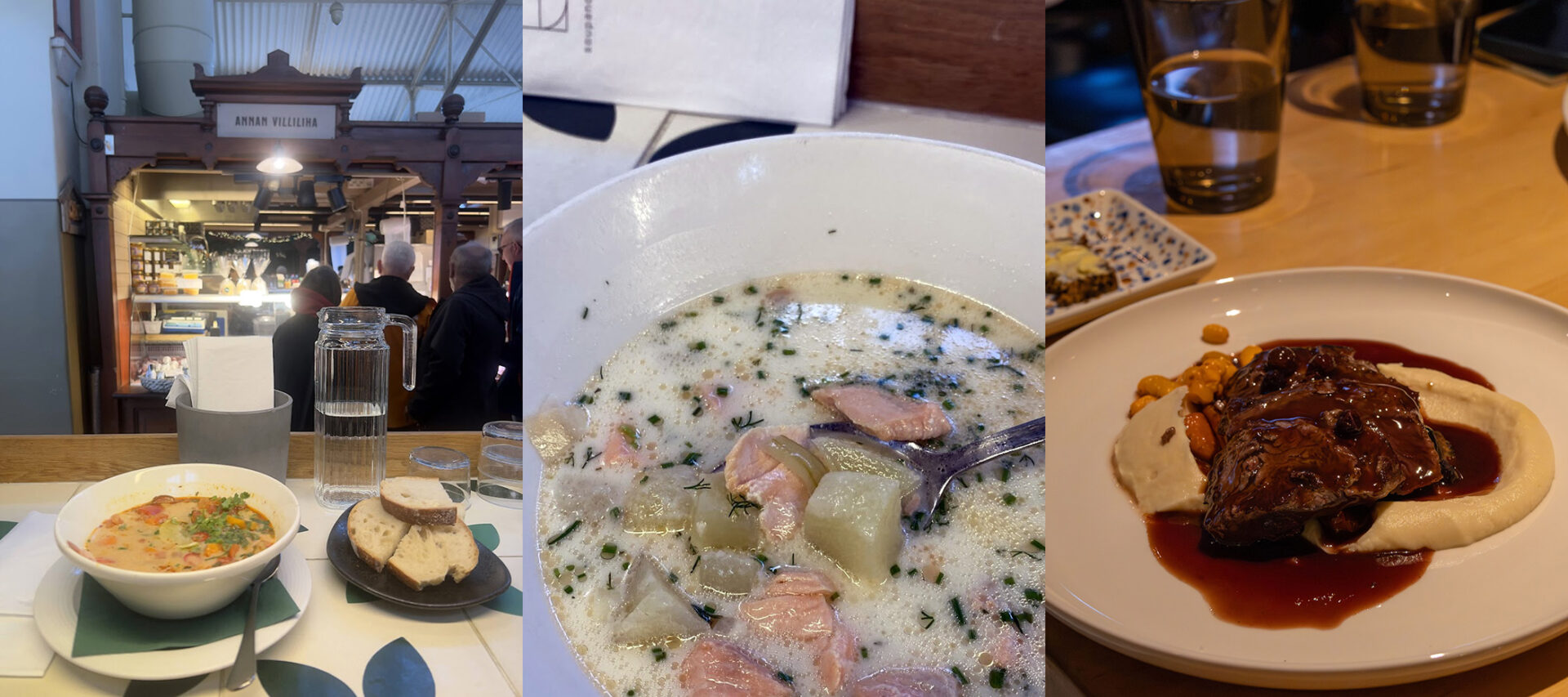
We also cannot forget the reindeer steak we tried at Restaurant Kuu. Reindeer meat itself felt unfamiliar, but curiosity led us to order it. The meat was surprisingly tender, almost melting in the mouth, with none of the intense gamey flavors we expected. It was unlike beef or pork, offering a unique, subtle, wild aroma without any unpleasantness. The tangy sweetness of the lingonberry sauce perfectly complemented the mildness of the meat. Mashed potatoes and roasted vegetables rounded out the dish as ideal supporting flavors. Trying a type of meat so new to us made the experience even more memorable, mainly because it was something we would rarely encounter outside Finland.
Another memorable place was brewery pub Fat Lizard located inside the Aalto University’s Otaniemi campus. It carried the friendly atmosphere of a casual campus hangout, similar to UNIST’s Tokyo-ya. As a brewery and restaurant, it offered a relaxed space where various beers and tasty pizzas came together. The craft beers they brewed in-house lined the menu with clear, friendly descriptions that made choosing fun. From IPAs to stouts, we could try many different styles, and the pizza, though simple, was impressively well-made. We found ourselves wishing for a place like this on our own campus. A space where students worn out from studying could gather for a beer, talk with friends, or even sit alongside professors and discuss ideas. It showed that a campus can be not only a place for academic work but also a place where life unfolds.

The dining experiences in Finland became essential scenes in our journey. Each meal allows us to taste not only the food but also the space and culture surrounding it. Every dish became a window through which we could understand Finland a little more deeply, and the flavors remain vivid in our memory even now. Although time has passed since our return, we sometimes find ourselves missing those tastes. We think of the air of those moments, the people we shared them with, and the conversations we had, and the memories become even richer.
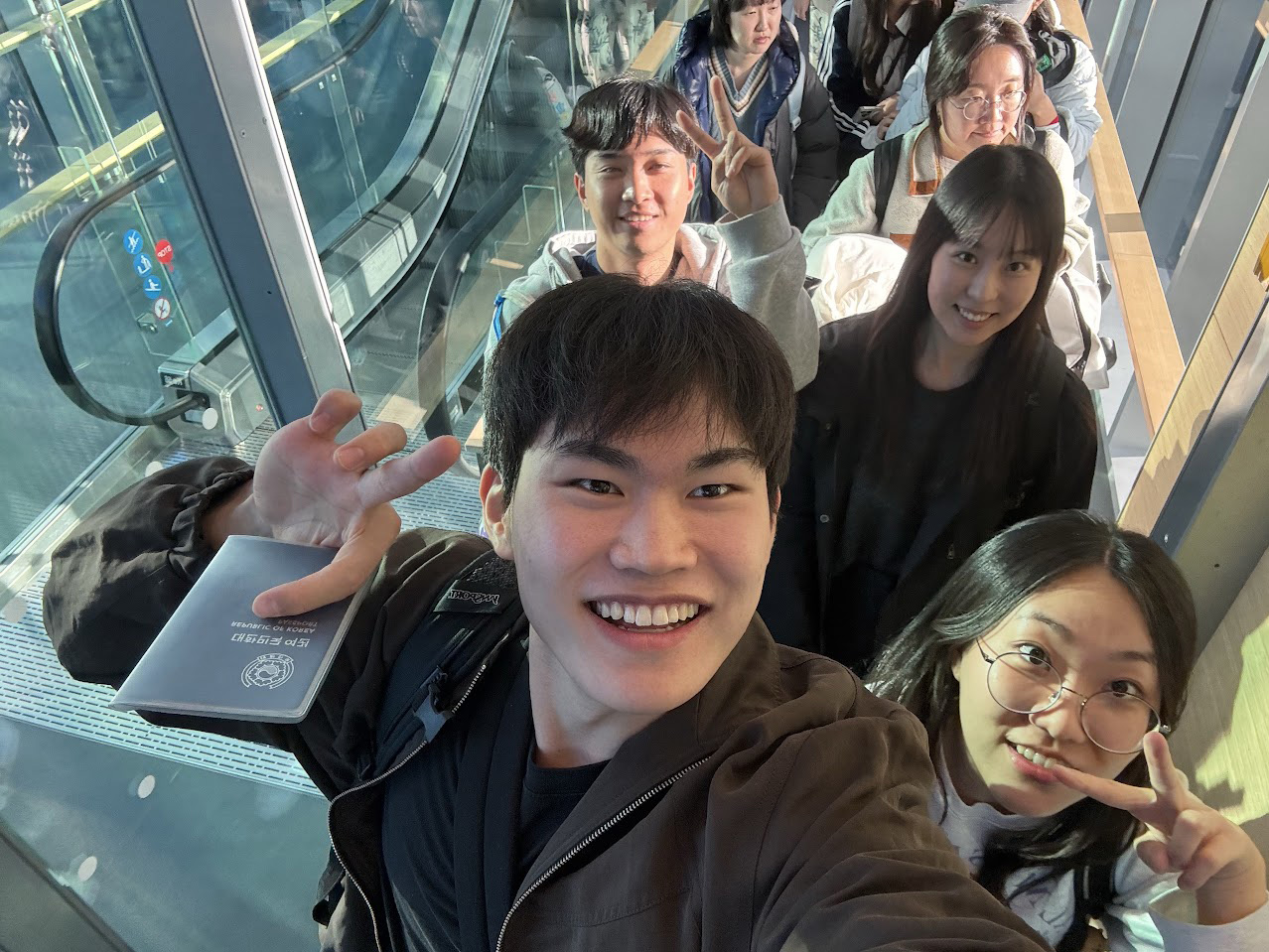
Our week in Finland was not just an educational workshop. It was a meaningful lesson in how design meets everyday life. The mindful design we encountered on the streets, the reflections on the future we found in companies, and the cultural depth we experienced through food all contributed to answering the question, “What is good design?” Now that we have returned, what we think about most is this: design must ultimately be oriented toward people. No matter how advanced technology becomes or how much AI can take over, the moments that truly matter still require human judgment and human sensitivity. And at the center of that, there must always be the question “why.” Of course, this insight is not something we can learn only in Finland. Still, if more students could have the chance to see, hear, and feel these things firsthand and gather their own thoughts about design, that alone would be an extraordinary experience.
Thanks for reading. Moi moi!!